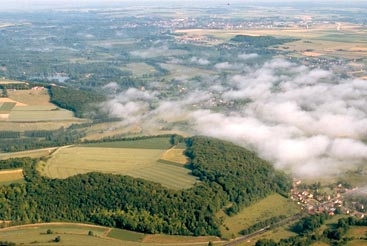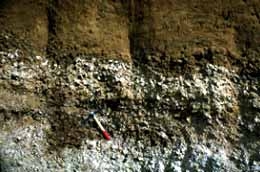- Home
- What is aerial archaeology ?
- Portrait of Roger Agache
- Birth of a passion
The valley of the Somme dominated by the "Camp of Caesar" at Liercourt: a typical landscape rich in history.
As an adolescent, Roger Agache experienced the war, exodus, the return to Amiens, bombings, and destruction. Despite transport difficulties, he returned as often as he could to his village, with a copy of Gaston Roupnel's Histoire de la campagne française in hand. It is to Roupnel that he owes his fascination for the history of the rural world. He began collecting worked flint, and observing dirt roads, lynchet, wandering paths, and the edges of forests. To better understand them, he spent time in the large, solemn reading room of the Amiens municipal library. His initial research focused on underground passages, places of refuge that villagers created to hide in during times of war. Illness forced him to give up his studies at the Faculté des Lettres in Lille.
He then became a rural instructor at Béthencourt-sur-Mer (Somme) and got married. He devoted his spare time to Prehistory and to the in-depth study of the work of Victor Commont, the founding father of modern Prehistoric science. Through surface prospecting and methodological examination of the terrace quarries of the Somme, he created an important collection of objects that he would donate to the Abbeville museum.
The famous Achulean Quaternary cross-section in the Somme at Cagny.
In 1954, Léon Aufrère, director of Prehistoric Antiquities, encouraged him to take up his studies again and put him in contact with the great prehistorians of the period, notably Abbé Henri Breuil, with whom he would sample Quaternary cross-sections. He received his diploma from the École Pratique des Hautes Études and prepared a thesis on the Quaternary Period in the Somme with André Cayeux and Franck Bourdier.

